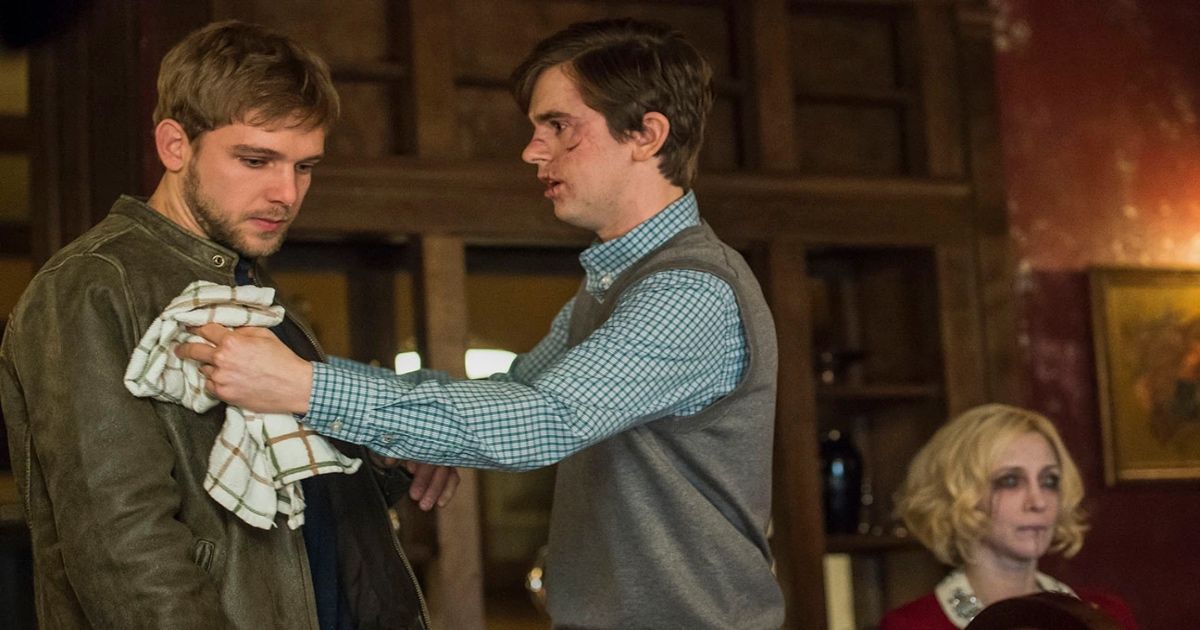
When Highmore first appeared alongside Johnny Depp in “Finding Neverland” (2004), there was something immediately distinctive about his performance as Peter Llewelyn Davies. While many child actors rely on cuteness or precocity, Highmore brought a haunting emotional transparency to the role of a boy processing grief while being drawn into the magical world of J.M. Barrie’s imagination. His eyes reflected both childhood wonder and premature sorrow—a duality that would become a hallmark of his early work.

Director Marc Forster recalls: “In casting Peter, we needed a child who could convey deep emotional pain without becoming maudlin or sentimental. Freddie had this remarkable ability to be simultaneously vulnerable and resilient. He understood instinctively how children process grief—how fantasy and reality blur in moments of emotional extremity.”
This understanding of childhood’s emotional complexity would carry through to his iconic portrayal of Charlie Bucket in “Charlie and the Chocolate Factory” (2005). What could have been a one-note performance of wide-eyed innocence instead became a nuanced portrait of a child carrying adult responsibilities while maintaining his essential goodness and hope.
“Charlie was a challenging role precisely because of his goodness,” Tim Burton noted during production. “It’s much easier to play darkness or conflict. To portray genuine goodness without becoming saccharine—that requires remarkable subtlety, especially in a child actor.”
These early roles revealed a pattern that would define Highmore’s career: an attraction to characters navigating complex emotional landscapes, often caught between different worlds or realities. Whether literal as in fantasy films or psychological as in his later work, this liminality—this existence between states—became a recurring theme in his choice of projects.
The Strategic Withdrawal
Perhaps the most significant decision in Highmore’s early career was not which role he accepted but what he temporarily walked away from. At the height of his success as a child actor, when offers were surely plentiful, Highmore chose to prioritize education, attending Cambridge University to study Arabic and Spanish.
This deliberate step back from the spotlight provided something precious: time to develop as a person outside the artificial environment of film sets and publicity tours. While many child actors struggle with the transition to adult roles precisely because they’ve had no opportunity to establish an identity beyond performing, Highmore’s educational interlude allowed him to approach his adult career with greater perspective and intention.
“I think taking that time was essential,” Highmore reflected in a rare interview. “Acting from such a young age, it’s easy to have your identity completely bound up in it. Education gave me context—a sense that acting was something I chose rather than something that chose me.”
This period of academic focus also meant that when Highmore returned to acting full-time, he did so not as a former child star desperately trying to prove himself, but as a thoughtful adult artist making deliberate choices. The roles that awaited him would test every aspect of his craft and reveal capabilities far beyond what his early work had required.
The Shadow Self Embraced
If Highmore’s childhood roles explored innocence and wonder, his first major adult role would plunge him into much darker psychological territory. His decision to portray Norman Bates in “Bates Motel” (2013-2017) represented not just a career risk but a complete inversion of his public image—a bold declaration that he would not be confined by audience expectations or industry categorization.
What makes this choice particularly remarkable is not just its dramatic departure from his previous work but how perfectly suited Highmore proved to be for the role. Norman Bates required an actor who could convey vulnerability and menace in equal measure, who could make viewers empathize with a character they knew was destined to become a killer.
“What fascinated me about Norman wasn’t the darkness itself,” Highmore explained. “It was the struggle—this person fighting against his own nature, trying desperately to be good while feeling himself pulled toward something terrible. That internal conflict felt universally relatable, even if the specific circumstances were extreme.”
Over five seasons, Highmore built one of television’s most complex psychological portraits—a young man’s descent into mental illness depicted with empathy rather than exploitation. His performance avoided both vilification and romanticization, instead finding the humanity in a character known primarily as a monster.
Kerry Ehrin, executive producer of “Bates Motel,” observed: “Freddie has this extraordinary ability to play opposing emotions simultaneously. Norman could be terrifying and heartbreaking in the same moment. That’s incredibly difficult to achieve, but Freddie made it look effortless.”
This duality—the ability to embody contradictory emotional states without resolving them into something simpler—would become another hallmark of Highmore’s mature work. His characters exist in emotional complexity, resisting the kind of reductive interpretation that makes so many performances forgettable.
